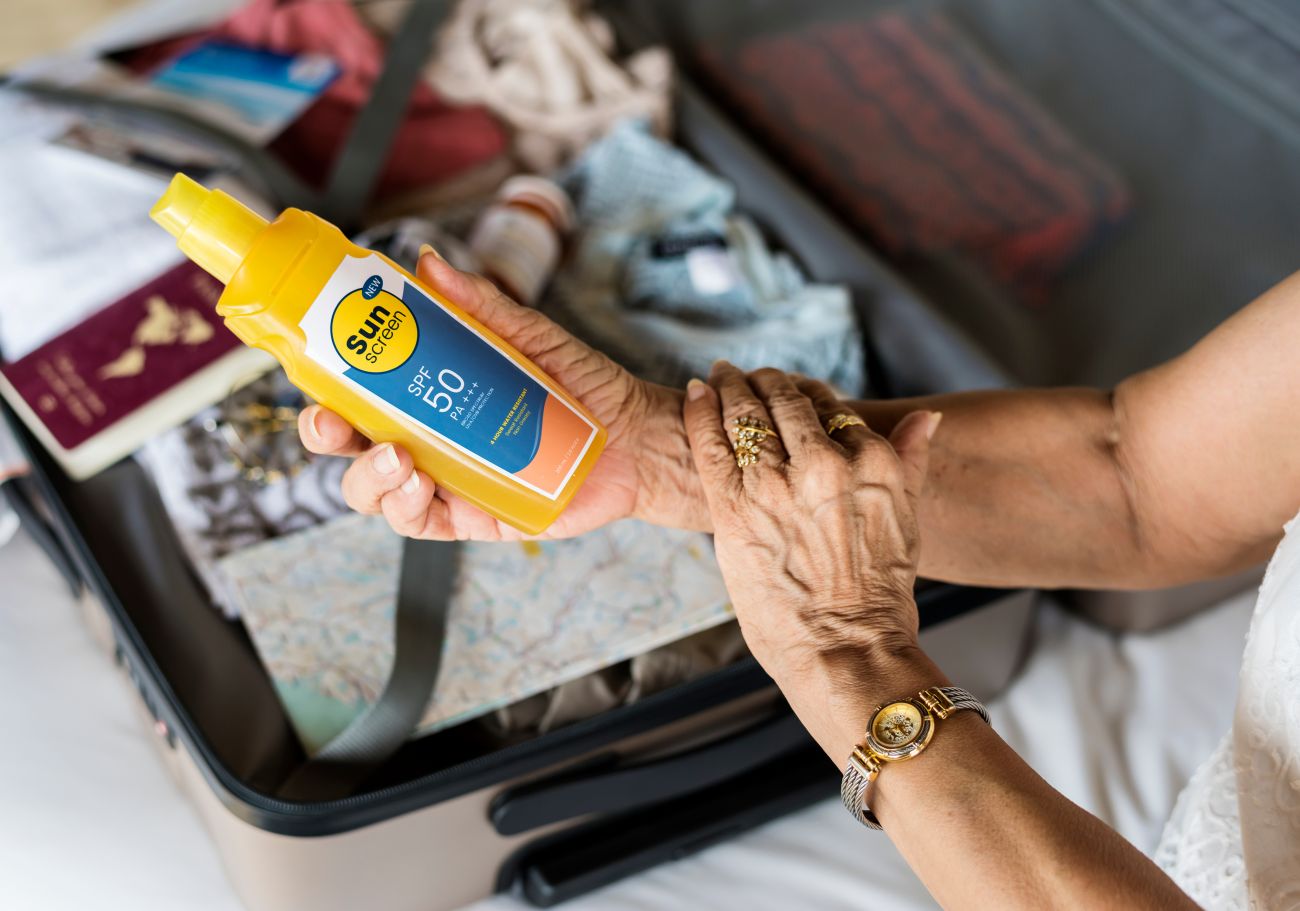There’s no age limit when it comes to the need to protect your skin from the sun. In fact, your odds of developing skin cancer actually rise as you age; nearly 50 percent of Americans age 65 or older have experienced at least one skin cancer, according to the Skin Cancer Foundation.1
If you’re a senior, don’t make the mistake of assuming the damage is already done, so sun protection doesn’t matter. It is never too late to prevent further damage and utilizing these 10 tips can help you do it.
1. Keep Your Skin Healthy by Moisturizing
According to the American Academy of Dermatology, as people age, their skin tends to become drier, thinner, itchier, more easily irritated, quicker to bruise and slower to heal.2
For seniors, regular moisturizing helps to keep skin supple and healthier. When skin is in good condition, it is better able to resist damage.
2. Opt for Clothing That Protects
Clothing can act as a barrier, preventing the sun’s harmful rays from reaching your skin. Garments made from tightly woven, dark-colored material offer more protection, but they aren’t a great choice when it’s hot because they tend to hold onto heat. Instead, AgingCare recommends wearing special clothing with an ultraviolet protection factor of 30 or more to shield your skin while also staying cool and comfortable.3
3. Don a Hat
A light-colored, wide-brimmed hat is something anyone who enjoys spending time outdoors should have in their wardrobe. The wide brim helps to shield the fragile skin of your face, reducing the risk of sun damage.
If possible, choose a hat made from a tightly woven material that features a brim that completely encircles the head. That way, your ears and the nape of your neck will also benefit from the hat’s protection.
4. Invest in Sunglasses
Sunglasses are another accessory with protective powers. The Centers for Disease Control and Prevention recommends that you wear sunglasses that are designed to block both UVA and UVB rays. They will not only protect the tender skin surrounding your eyes but also shield your eyes, reducing your risk of developing cataracts.4
5. Wear the Right Sunscreen
WebMD recommends that you opt for a broad-spectrum, water-resistant sunscreen with a sun protection factor, or SPF, of 30 or higher.5
You will find several products that meet these requirements:
- Neutrogena Ultra Sheet Dry-touch Sunscreen SPF 30 sells for around $10.99 for a three-ounce tube. It is affordable and comes from a trusted brand that is often recommended by dermatologists.6
- Blue Lizard Australian Sunscreen Sensitive SPF 30+ sells for around $14.99 for a three-ounce tube. Designed by dermatologists, this mineral sunscreen is a great choice for touchy skin.7
- MDSolarSciences Mineral Moisture Defense SPF 50 sells for around $39 for a four-ounce tube. It protects skin from the sun while also locking in moisture with a mix of ceramides and humectants.8
6. Wear Sunscreen the Right Way
The best sunscreen won’t protect you if you fail to wear it properly. To do it right, apply sunscreen to all bare skin, including often-forgotten places like the back of your hands and neck and the tops of your ears and feet, at least 20 minutes before you plan to venture out.
Don’t skimp on the product. According to the American Academy of Dermatology, most adults will need to apply the equivalent of a full shot glass to achieve proper coverage. Also, be sure to reapply every two hours or whenever you have been in the water or sweating a lot.
7. Spend Time in the Shade
Seeking out a shady spot is another way to protect your skin from too much sun exposure. However, you may be exposing your skin more than you realize, so it is best to combine this strategy with other sun-protective steps like wearing sunscreen or sun-protective clothing.
8. Avoid Peak Danger Times
According to the American Cancer Society, the sun’s damaging ultraviolet rays are generally the strongest between 10 a.m. and 4 p.m.9 Limiting your time outdoors during this period can help you limit your danger of sun damage.
If you are outside, try to spend the bulk of this part of the day in the shade.
9. Protect Yourself in the Car
Have you ever noticed that Americans who spend much of their time driving have a left arm that is tanner than their right one? Being inside a vehicle doesn’t eliminate the need to protect yourself from the sun because its rays easily penetrate the glass that makes up the windows.
If you’re hitting the road, wear sunscreen, protective clothing, and sunglasses.
10. Visit a Dermatologist
Skin cancers and other issues are not always in obvious, easy-to-see locations. Making a skin check with a dermatologist a part of your regular health care routine increases the odds of catching potential problems while they are small and easily treatable. It also provides a great opportunity to ask questions about the health of your skin and seek professional advice about what you should be doing to keep it healthy.
Conclusion
Getting older doesn’t mean that it’s time to give up having fun in the sun. After all, activities like walking, swimming, gardening, biking, playing sports, and even just socializing in the sun can be good for your mental and physical health. Taking smart steps to protect your skin while in the sun allows you to enjoy being outside without getting burned.
